Monday 19 August 2008
We couldn’t believe it. It was cold in the morning so we turned on the heater – and it didn’t work. Surely we don’t have the Russian problem again, maybe the glow plug is not working. Dick will check it later.
After warm showers in the Earthroamer and a breakfast of toast and tea, we headed off. It was only 49° Fahrenheit (9° Celsius) outside. After trying the Mobil Auto Centre with its credit card bowser, and only being able to get $70 worth of fuel, we drove down the road and a lovely young lady at Aus Fuel sold us 132 litres at $1.74 per litre. It is getting cheaper all the time.
We crossed the Bulloo River. It is an unusual river as it doesn’t flow to any lake or ocean, it simply flows into the Bulloo overflow on the Queensland/New South Wales border. This is a huge area where the water just flows over the land and gradually evaporates. Possibly it is where Clancy of the Overflow lived!
At Quilpie we met the railway line for the first time. This is its furthest point west, and Dick was delighted to see that the tops of the rail were silver – not rusty as in many places in the world. We found out later that they have two or three trains a day – mainly freight and cattle.
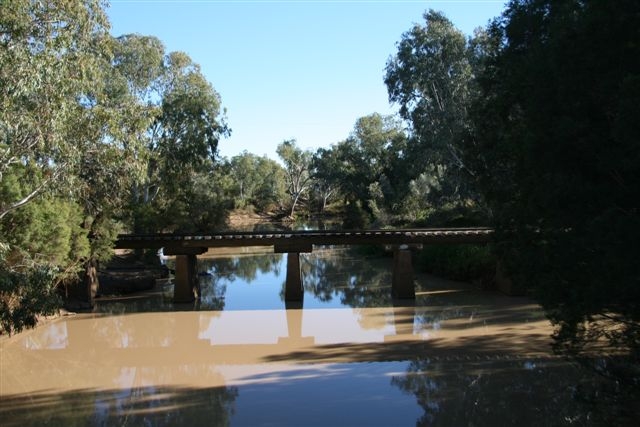
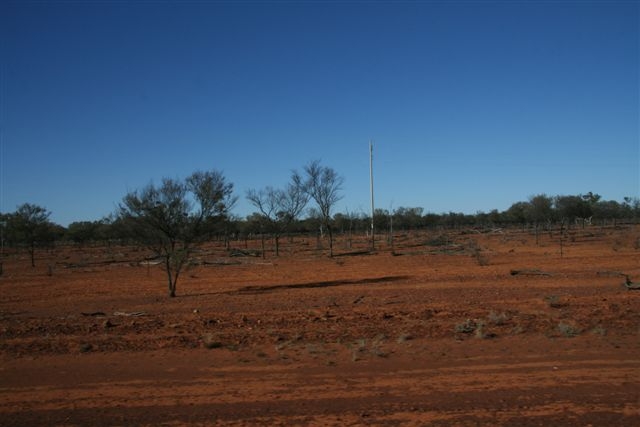
Shortly afterwards we stopped to talk to a rail maintenance crew. They were replacing railway sleepers (it looked as if it was about one in every five) using large automated equipment. The first machine travelling along the track takes out the dog spikes. The next machine pulls out the faulty sleeper – which has been pre-marked with paint by other automated equipment travelling on the tracks weeks before. The new sleeper is then slipped in. The crew said they work seven days on and seven days off, and the new crew would be taking over tomorrow. They have to move all of their equipment 30 kilometres to a siding if a train comes, but that is only twice a week and they said it would be tomorrow.
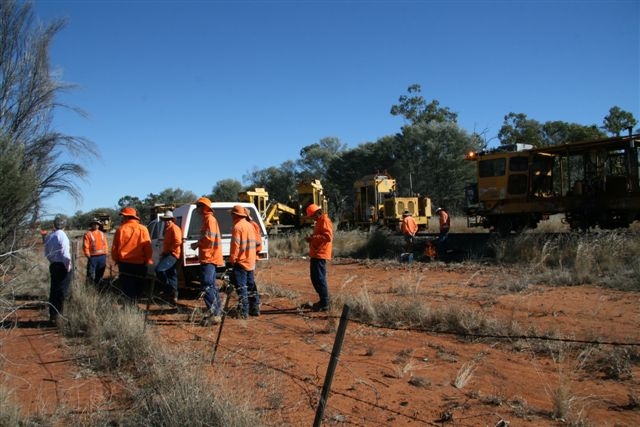
At the town of Cooladdi, we came across one of the most enormous oversized loads we had ever seen. There were two houses on the back of two enormous trucks. The load was so big it was given a Police escort. We stopped and spoke to the friendly Police lady who said the load had been picked up in Bundaberg and was being taken to Jundah, which is about 80 kilometres to the north east of Windorah. That means they still had at least another 500 km to go.
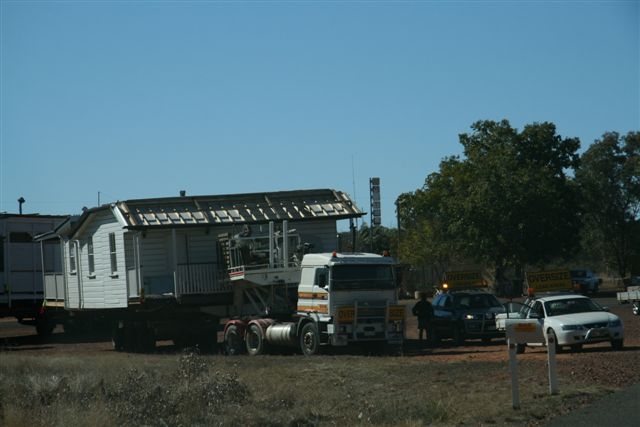
A little while later at the Ward River we saw some beautiful Brolgas. Most of this area is underwater at flood time. We were driving along with flood level gauges constantly beside the road.
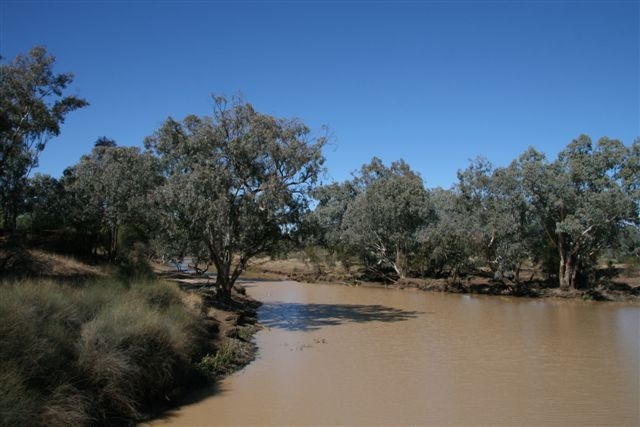
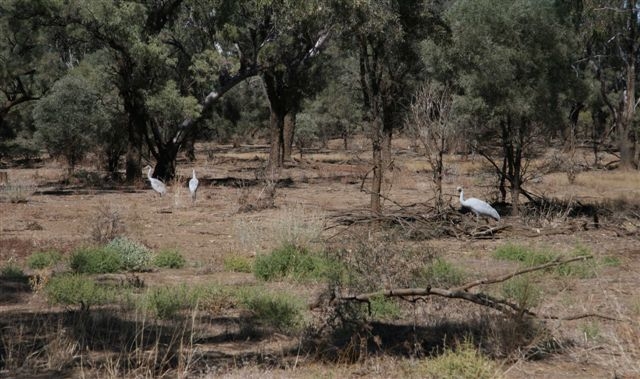
At 11.00am we reached Charleville and dropped into the newsagent for a newspaper. We had a quick coffee and a sausage roll. Pip noticed that the back right hand tyre had a huge gouge out of it. We expected this ever since we had driven through Mongolia and on the Siberian roads. The bashing was incredible. Remarkably, we had never had a puncture.
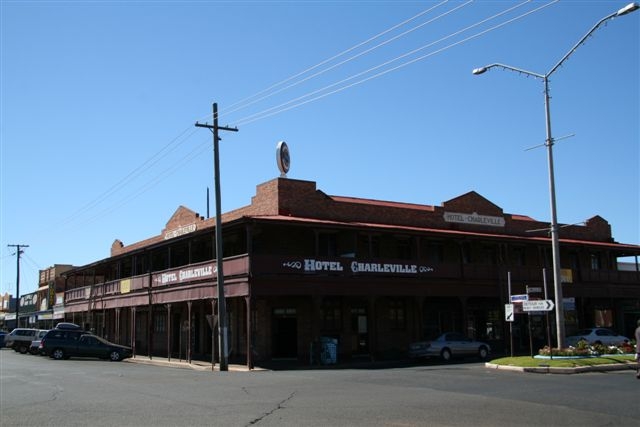
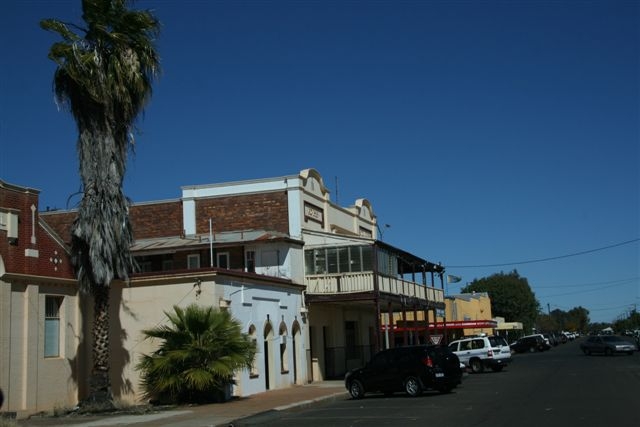
It was recommended that we drive to Tyre Power – a friendly family company on the outskirts of the town. Ron Sullivan and his wife Glenda own the business. Mark, Michael, Ron and JJ quickly got to work. Within an hour and a half, not only was the tyre removed and replaced with the spare on the back, but the left hand tyre was also replaced with the other spare. The tyres were filled with air, and JJ once again welded the rear bumper which holds the spare tyre. All of the work was done for $75. We believed that was far too little and offered $100. They were very grateful. What a wonderful Australian family company.

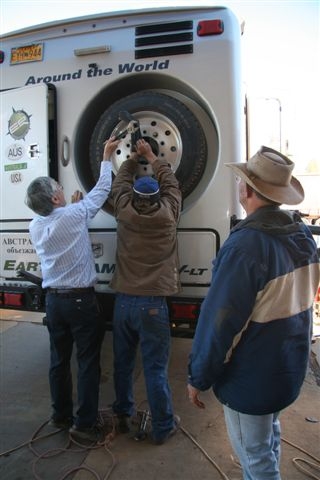
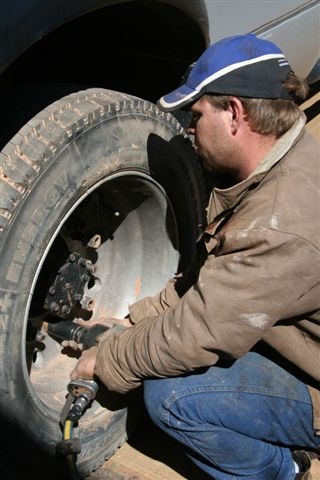
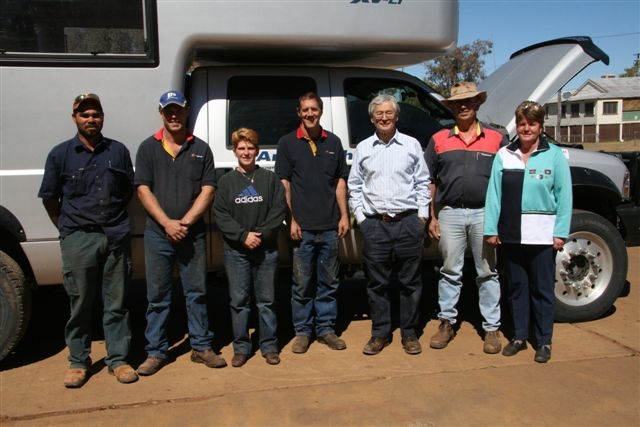
We headed off from Charleville at 1.10pm, and – believe it or not – passed the train. Seeing as there are only two trains a week, what a fluke! Dick loved it. We stopped at a picnic spot for lunch. The Queensland roads are very clean. There are picnic spots every 20 kilometres or so, with plastic rubbish bins which are obviously cleared regularly. There are good interpretive signs all the way. The sad thing about the road is the incredible amount of road kill – mainly dead kangaroos. We would have passed over 200 dead kangaroos. It is a good reason to not drive at night.
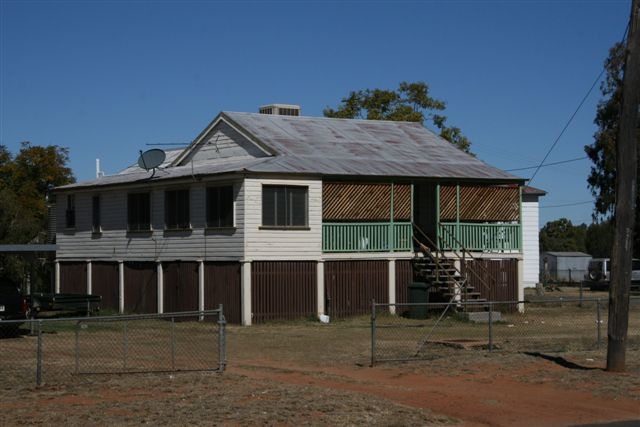
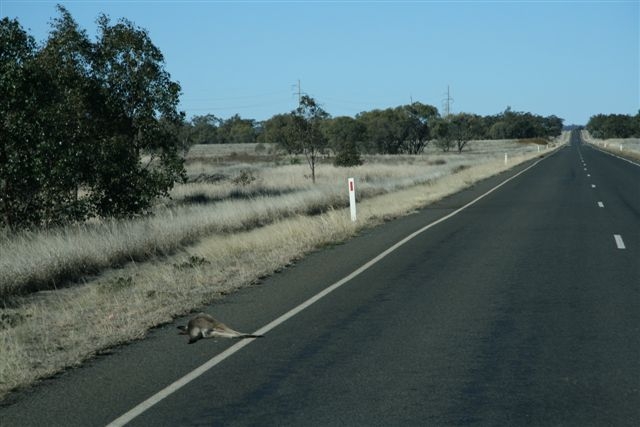
There were beautiful flowers along the road, and unfortunately remnants of the terrible prickly pear bush. Prickly pear had been introduced into Queensland with the cochineal beetle, so the beetle could be used to make cochineal. The prickly pear completely took over most of the countryside, and the problem was not solved until the introduction of the cactoblastis cactorum grub. There are still a few remaining prickly pear bushes beside the road, some over three metres in height.
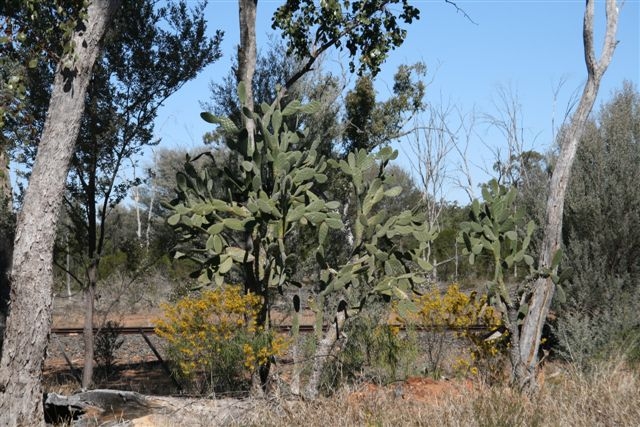
At Morven, where we had been travelling beside the railway line, there were wool bales on the platform. It is great that wool is being transported by rail and not by huge road trains – which obviously use more fossil fuel.

The trees started to become bigger beside the road, and at 2.50pm we couldn’t believe our eyes. We were in the middle of a huge cattle drive. There beside the road was the drovers’ plant, a caravan, a few horses, some washing hung out to dry, and a water tanker. Dick originally thought the water tanker (which looked like a huge fuel truck) was something to do with road maintenance, but he then realised it was part of the drovers’ plant – supplying water to the cattle.
We stopped and spoke to the head drover – Graham Francisco – who was moving 1,450 cattle along what we call in Australia “the long yard.” That is, the stock routes. The cattle had originally been trucked from Alice Springs, leaving in January and travelling to Tambo. He had been droving them ever since. Tambo was about 300 kilometres away, but he had done over 600 kilometres in distance.
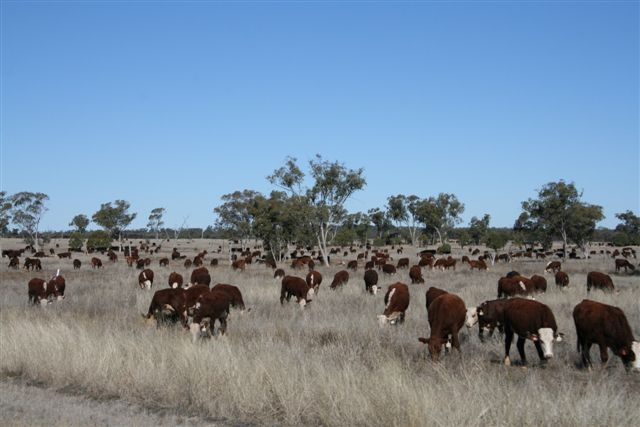
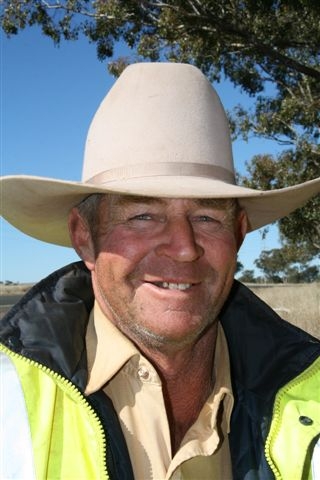
The cattle looked to be in really good nick, and they were being driven to Moree in NSW. They were owned by Robert Woodward, a Victorian, obviously being fattened as they travelled (using the Government’s land) and being sold in New South Wales where the price would be higher.
Graham told us that the cattle station owners in Queensland were really cooperative and friendly – after all, the long yard is owned by the Government – but he expected that when he got to New South Wales he would be moved on quickly!
When we got to Mitchell, we saw huge trees which we thought were boab trees, but we were later to find out that they are a different species – the bottle tree. There were lovely old pubs and houses beside the road. We crossed the Maranoa River and reached Amby at 4.00pm. We came across our first paddocks, with crops waiting to be harvested. When you consider that we were now only 400 kilometres from the coast, it shows how thin our fertile lands are in Australia. In the United States, you can travel from New York to Denver and have cultivated fields the whole way – that is a distance of over 2,600 kilometres.
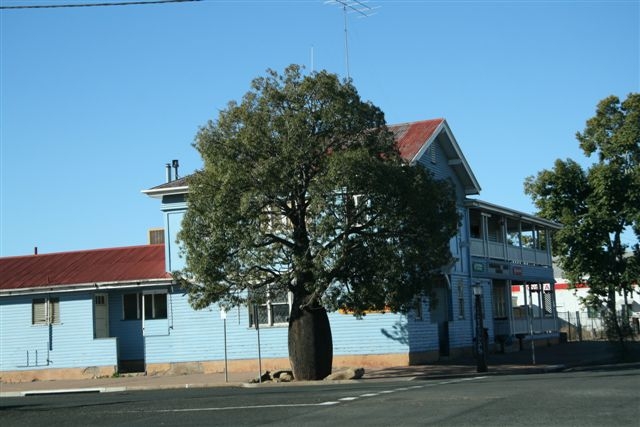
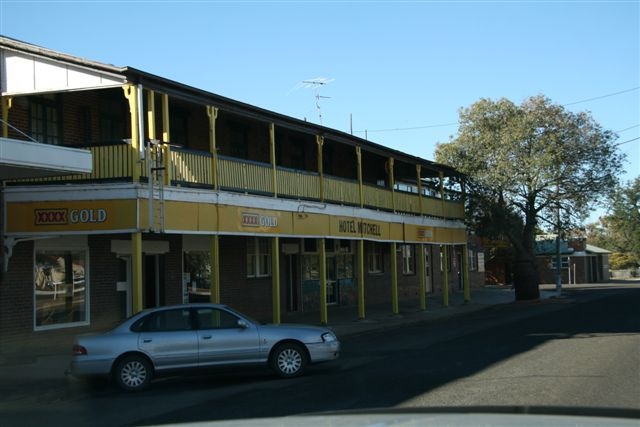
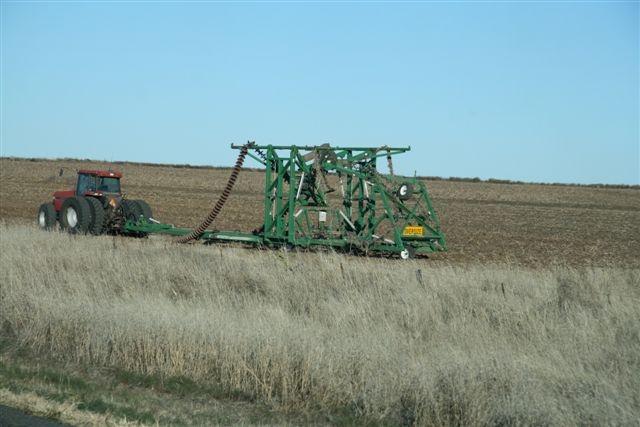
We stopped by the road at 4.20pm to have a cuppa, and a huge cattle train pulled in beside us. We came across our first silos only 18 kilometres from Roma.
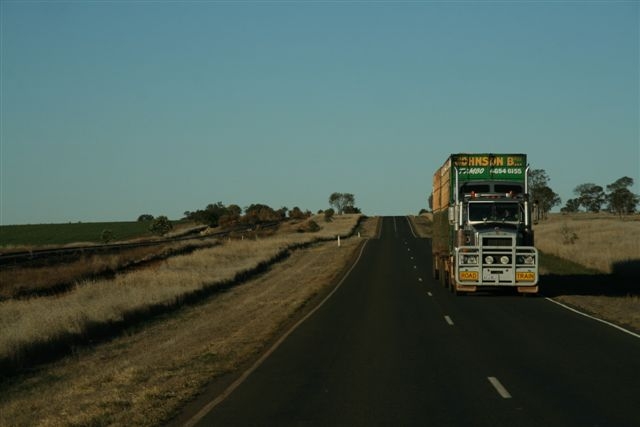
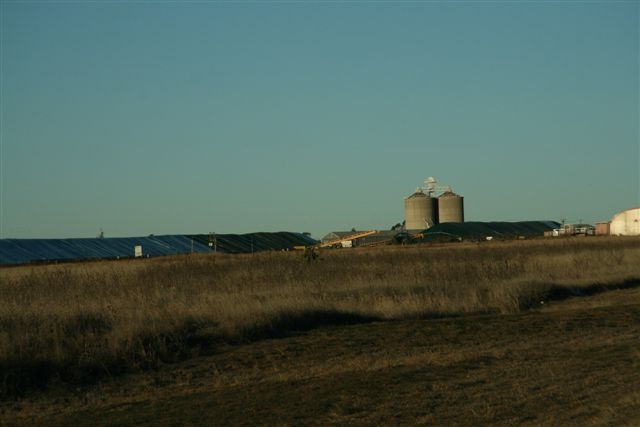
As the heater had failed for some strange reason, we decided we would have a night of luxury, so we checked into the Explorer’s Inn at Roma. We had a top visit to the Big Rig, which has an audio visual night show telling the story of the oil and gas industry in Roma. Interestingly enough, when they were drilling for water at the turn of the century in Roma they found gas, and thought their well had failed. In the late 1920s, American oil men came to Roma and helped to drill further wells. Now Roma supplies most of the gas for Brisbane and the Gold Coast through a pipeline.

Total today 499 kms 38,861 kms since Anchorage, Alaska.
Click here for the next day – we cross the Darling Downs for the coast.
Click here to return to the Smith’s Overland main index page.
